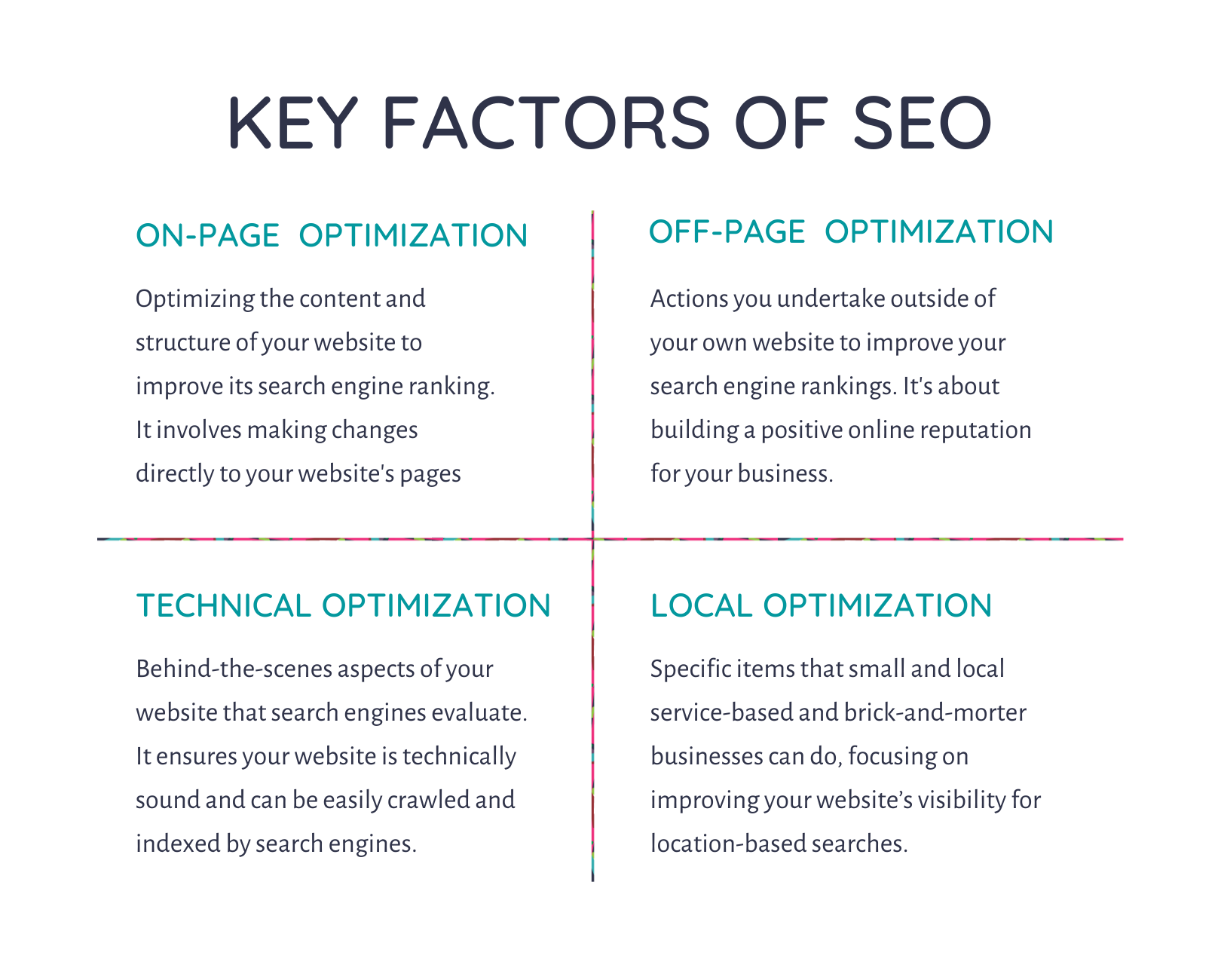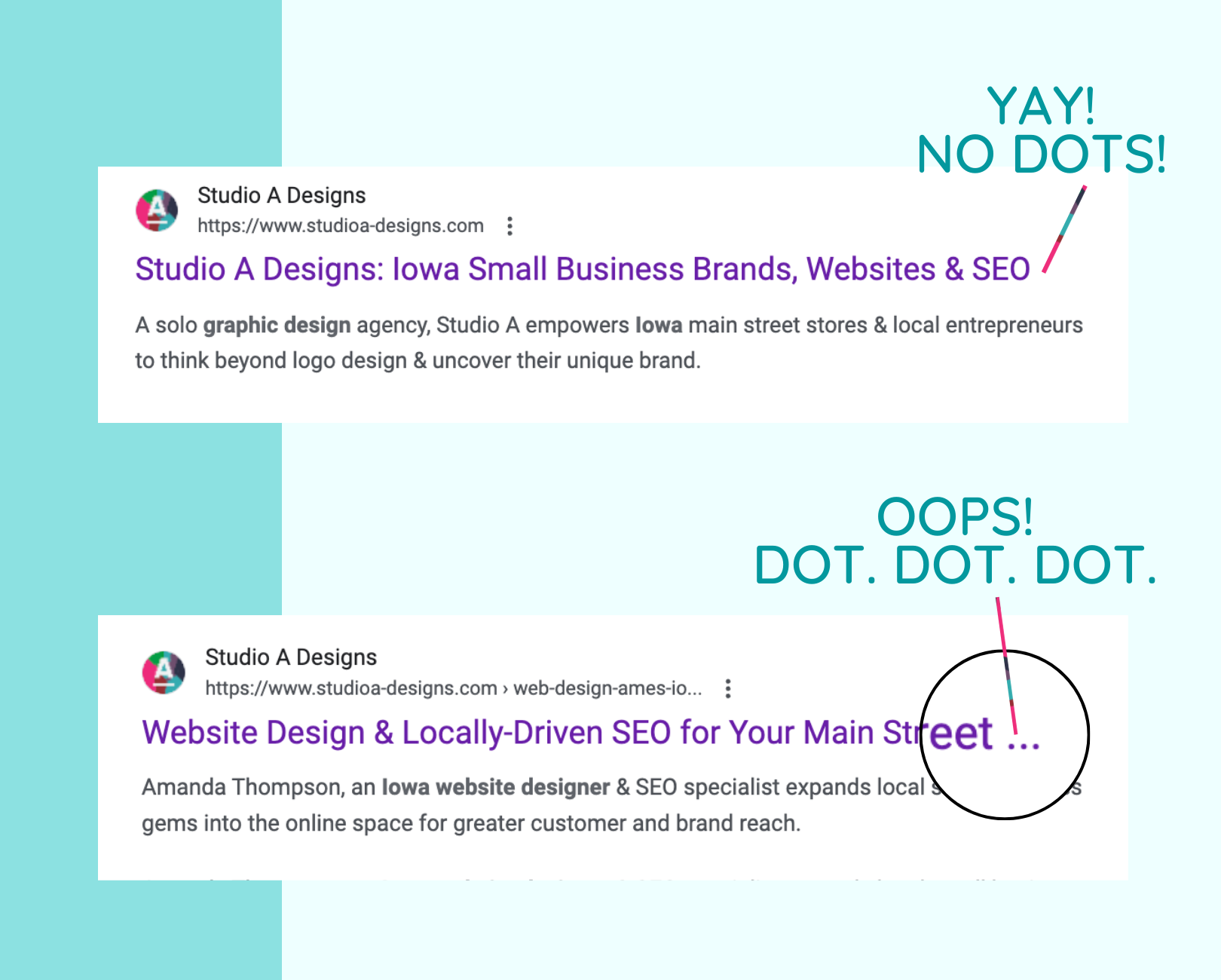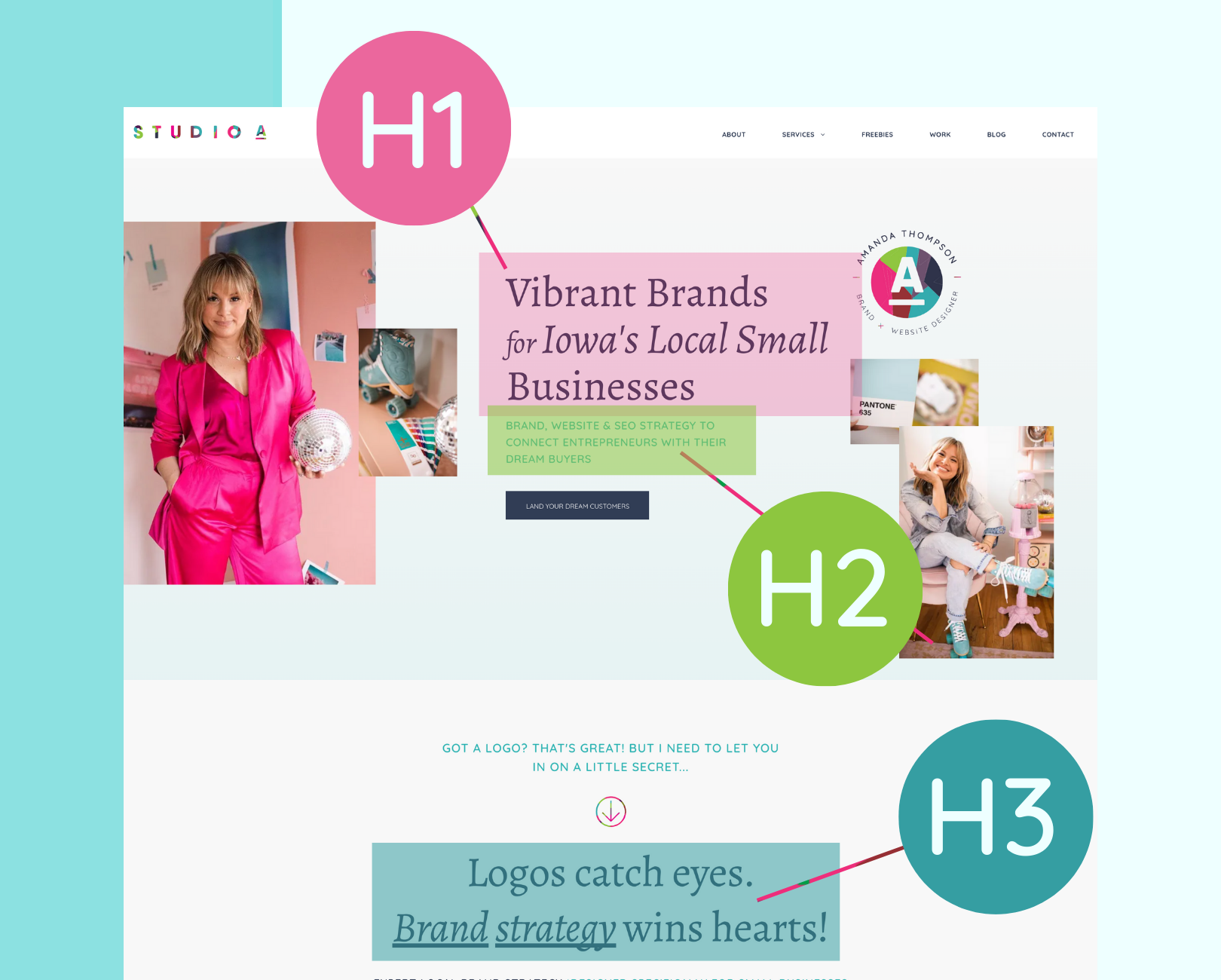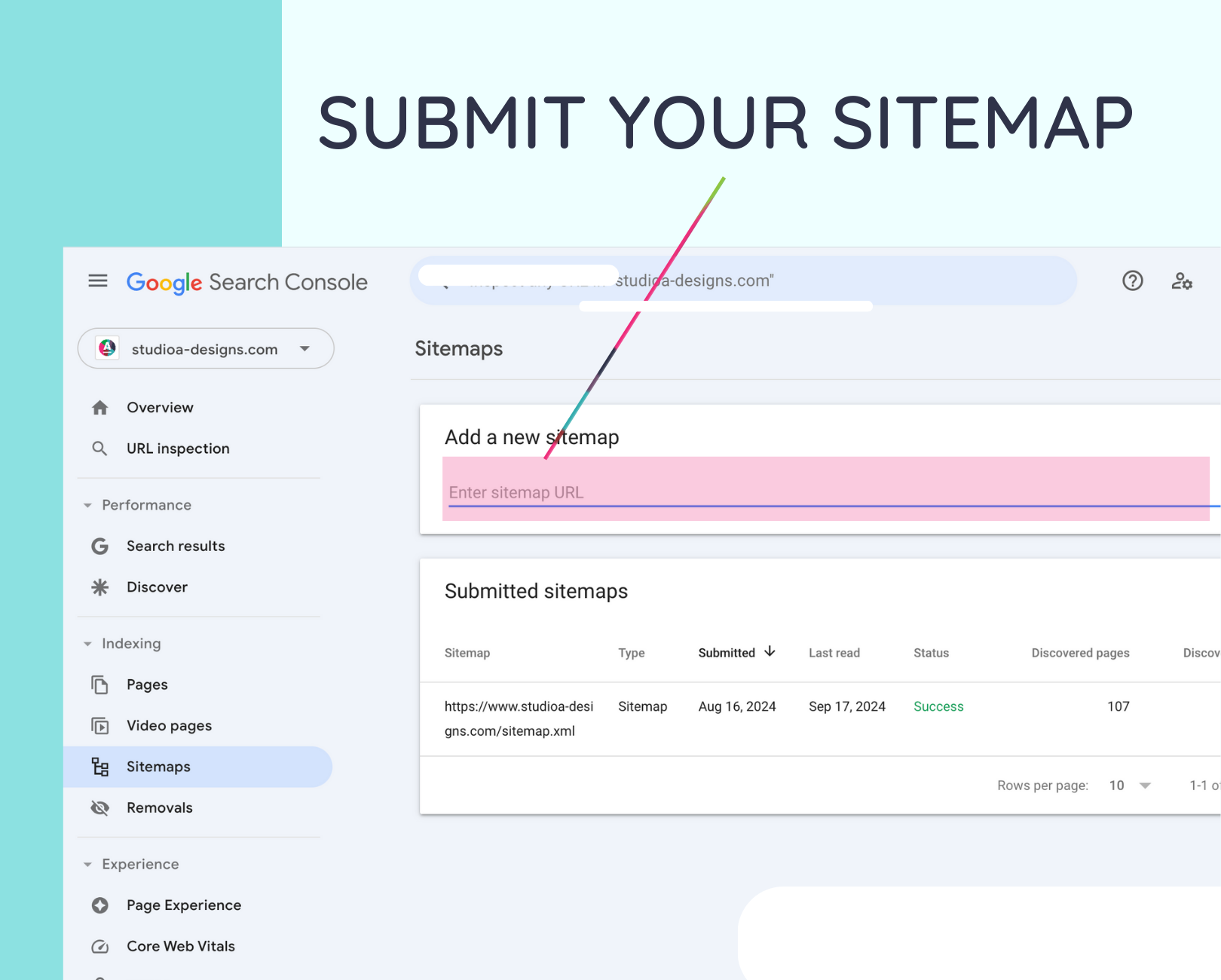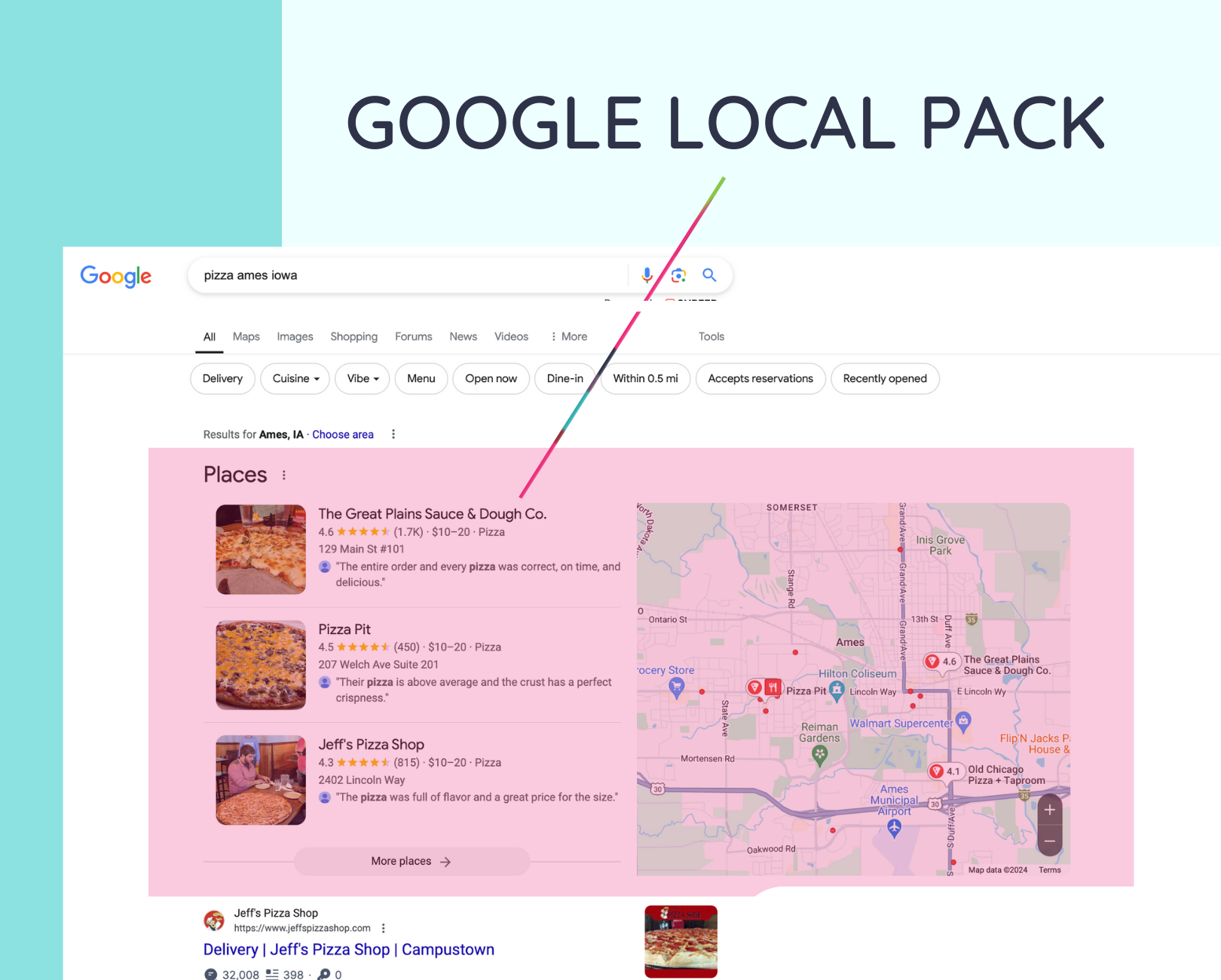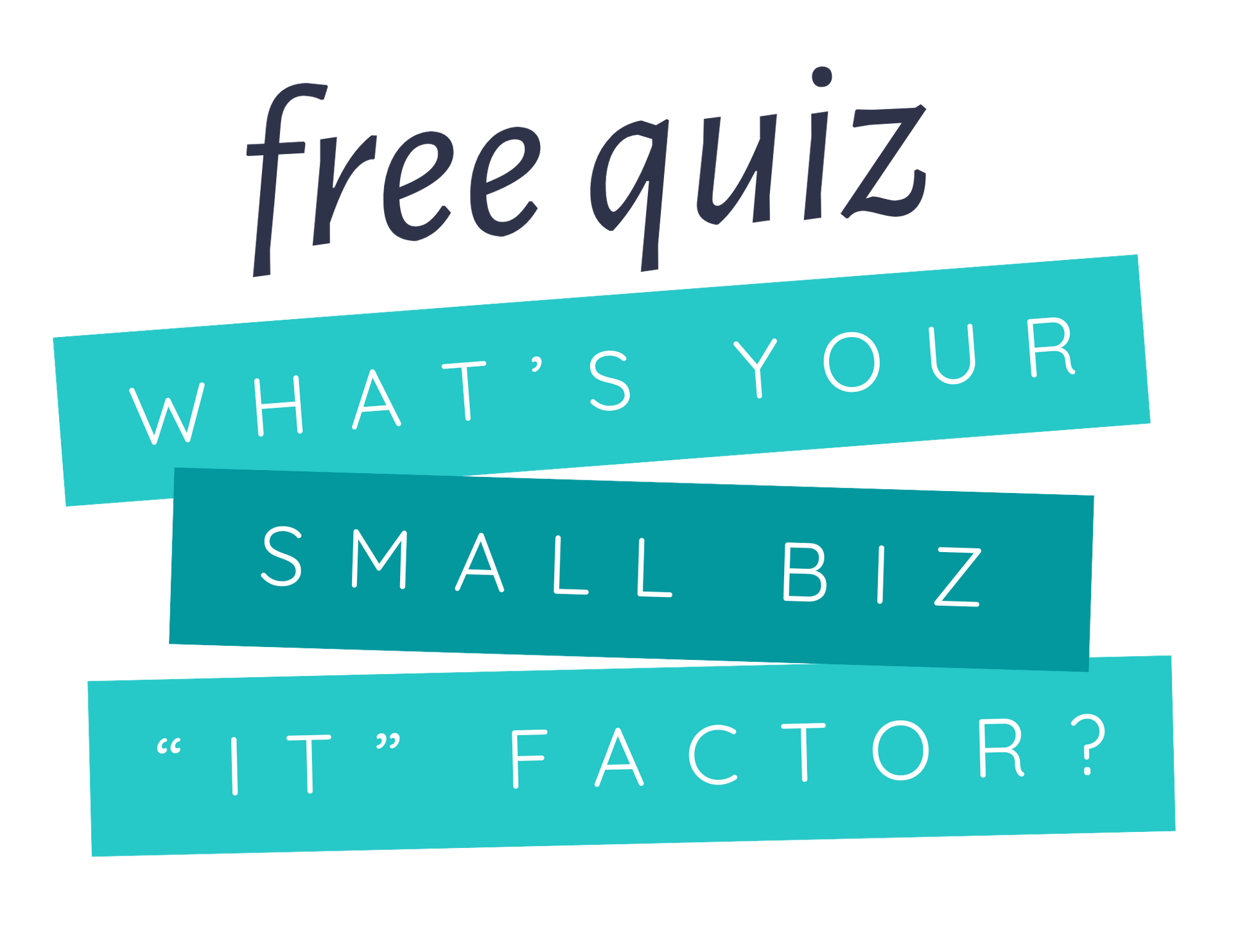Remember when you first created your website? You spent soooo many hours building your own little corner of the internet, a place to showcase your business and connect with customers.
You probably didn’t think too much about the techy stuff like Search Engine Optimization or how new customers might actually find you out on the world wide web.
But as you've grown, you've realized that having a strong,
findable
online presence…and a website with a healthy relationship with Google…is just as important as having a nice website.
That's where SEO comes in. It's like adding a GPS to your website, helping people find you when they're searching for the products or services you offer.
Now that you’re getting the hang of it, let me take you through the basics of SEO, step-by-step, so even the most tech-challenged business owner can get it.
And if you’re thinking, “SEO huh? That sounds complicated,” don't worry. You don't need to be a tech whiz to improve your SEO. I gotchu! Come along with me!
____________________
IN CASE YOU MISSED IT:
〰️ The Best Metrics to Track to Determine Your Website Success
〰️ 5 Elements of a Website that Convert Lookers Into Customers
〰️ How your Business Location Impacts Branding, Website & SEO Strategy
____________________
Understanding the Basics of SEO
SEO might seem like something only tech experts deal with, but it's really just about making sure people can find you online. If customers can't find you, you're missing out on business. Let’s answer some basic questions I often get asked as an
SEO-driven website designer.
What is SEO?
SEO stands for Search Engine Optimization. In its simplest definition, it’s the process of improving your website’s visibility on Google search results pages.
Why is SEO important for your Iowa small business?
Here’s a simple example: Let’s say someone is visiting Ames, Iowa, for a Cyclone football game and planning to find a local pizza joint after the big win. You head to Google and search for the “best pizza in Ames, Iowa.” SEO helps “The Great Plains Sauce and Dough Co.” rank high in search engine results.
What are the key factors of SEO?
The great part about breaking it down like this is that you can divide your time working on your website into these sections, making them more digestible and simplified.
- On-page Optimization:
This refers to optimizing the content and structure of your website to improve its search engine ranking. It involves making changes directly to your website's pages, like using keywords naturally, creating high-quality content, and improving user experience.
- Off-page Optimization:
This includes actions you undertake outside of your website to improve its search engine rankings. It’s about building a positive online reputation for your business through high-quality backlinks, local citations, and online reviews.
- Technical Optimization: These are the behind-the-scenes aspects of your website that search engines evaluate. Technical SEO ensures that your website is well-structured, mobile-friendly, and can be crawled and indexed easily by search engines.
- Local SEO: Especially for you as a small business, Local SEO focuses on improving your website’s visibility for location-based searches. This includes optimizing your Google Business Profile, collecting positive reviews, and using location-specific keywords in your content and meta descriptions.
What is considered the biggest SEO factor for getting ranked?
While there are several critical factors that contribute to SEO success, the top SEO factor for getting ranked is high-quality content. Quality content drives many other important SEO elements, including keyword optimization, user engagement, backlinks, and search engine crawling.
While on-page, off-page and technical SEO elements are important, the content itself holds the most weight because search engines prioritize delivering the best possible answers to users' queries. When users spend more time on your pages, google takes that as a sign that your website is providing high-quality content.
___________
IF YOUR CONTENT DOESN'T OFFER VALUE OR ANSWER THE USER'S QUESTION, EVEN WITH PERFECT TECHNICAL SEO, IT WON’T RANK WELL.
_____________
Does the Choice of Web Builder Matter for SEO?
NO it does not! While Wix, Wordpress, Squarespace or Shopify tend to claim they are amazing platforms for SEO, Google doesn’t favor one platform over another. What search engines do favor is high quality, well structured and optimized content. While you do not need any specific website builder for your website to be found by Google, some platforms offer built-in tools (e.g., plugins for WordPress, SEO settings in Shopify, and even AI generation) that can make SEO implementation easier.
How Long Does SEO Take to Work?
I completely empathize with your need to get found on Google RIGHT NOW. Trust me, no one wants to wait. SEO takes time and consistent effort. Let’s look at some facts we know about the length of time it takes for you to get found after implementing SEO.
Patience is Key
Within the first couple of months, you might start seeing minor changes such as increased impressions, slight ranking improvements, or more traffic to blog posts. This can give you confidence that your SEO efforts are moving in the right direction.
For most websites though, especially small businesses, it can take 3 to 6 months to see measurable improvements in rankings, traffic, and leads. This assumes consistent and effective SEO practices are being implemented during that time.
Factors that affect SEO results
- Industry competitiveness:
If you’re in a highly competitive industry, it may take longer to rank for certain keywords.
- Website quality: If your website is well-built, with good consistent, quality content and technical structure, it may perform better and faster.
- Keyword difficulty: Easier, long-tail keywords (specific phrases with lower competition) may rank faster, whereas highly competitive, broad keywords will take longer.
PRO TIP: Local SEO can speed things up! Local SEO can yield faster results than general SEO due to the geographic targeting. For local businesses targeting geographic-specific searches (e.g., “best pizza in Ames, Iowa”), especially for brick-and-mortar businesses, results may come faster because local searches have less competition and are physically closer to purchasing.
DIY SEO Tips for Your Iowa Small Business Website
Alrightly, we’ve made it to the best part of this lovely little post. This is where you can take actual actionable steps to begin changing the course of your business searchability online. I can’t wait to share how to do this, one step at a time.
On-Page Optimization
Now that we’ve covered the basics, let’s dive into one of the easiest (and most rewarding) and the meatiest ways to improve your SEO—On-Page Optimization. This is where you get to tweak the content and structure of your website so Google can understand exactly what your business is all about. Don’t worry, you won’t need any fancy tech skills and you certainly don’t need to know code. As a small business owner, you can confidently optimize their website and start seeing results!
〰️ Content Quality
Creating high-quality, informative content! As I mentioned above, this is the most important ranking factor. Content, AKA, words on the pages of your website that provide good keywords, relevant search content, and long engagement times is the queen bee🐝!
〰️ Keyword Research and Optimization
Using a free tool like Neil Patel’s Ubersuggest can be helpful in finding the right keywords. The key to picking the right keywords is based on volume and competition. For a small business, it’s important to look for keywords with low to medium competition with a medium search volume.
Pro Tip: Get a Leg Up on Local! If you are a local business, get VERY local specific with your geographical content. List things like city names, regions, etc. Keep scrolling for more on this at the end of this blog post.
〰️ Don’t Keyword Stuff!
Be careful not to keyword stuff. Google’s algorithms detect keyword stuffing and it can majorly damage your brand reputation. Opt for natural and varied language so google sees you adding content value, not subtracting. Always aim for user-focused content over oversaturating your site with the same keywords.
- Here’s an example of keyword stuffing:
"If you’re looking for the best pizza in Ames, Iowa, you’ve come to the right place for the best pizza in Ames, Iowa. Our pizza place in Ames, Iowa, offers the best pizza in Ames, Iowa. Whether you want pepperoni pizza in Ames, Iowa, or cheese pizza in Ames, Iowa, we have the best pizza in Ames, Iowa." - Here’s a much better approach:
"Looking for a delicious pizza in Ames? At The Great Plains Sauce and Dough Co., we take pride in serving handcrafted pizzas made with fresh, local ingredients. Whether you’re a fan of classic pepperoni or enjoy unique toppings like spinach and feta, we’ve got something for every pizza lover. Stop by after the Cyclones game and experience why we’re known for having the best pizza in Ames."
〰️ Title tags and meta descriptions
The title tag is crucial because it tells both users and search engines what your page is about. It’s the clickable headline that appears in search results, and it should include your primary keyword to increase relevance. Though not a direct ranking factor, a well-written meta description can improve click-through rates (CTR) from search engine results pages (SERPs), indirectly boosting SEO.
Pro Tip: Limit your characters to about 50-60 for title tags and 155-160 for meta descriptions to avoid the dreaded “dot. dot. dot.” in results.
Header tags
Proper use of header tags helps structure your content for readability and SEO. H1 is typically the main title of the page, and using H2 and H3 tags to break up content makes it easier for both users and search engines to understand the hierarchy of information.
〰️ Image optimization
Adding alt text to images is such a simple way to add value and searchability. Alt text not only helps search engines understand what your images are about, but it also makes your site more accessible to visually impaired users—a win-win for SEO and inclusivity!
Builders generally make it quite simple to add into your website with little effort or time. Oh, and don’t forget to make sure your images are compressed to keep page speeds quick because site speed also impacts SEO. My favorite online tool is Optimizilla.
〰️ Internal Linking
Linking to other relevant pages on your site helps search engines crawl your site more effectively and boosts the authority of individual pages. If you have a blog, which I highly, HIGHLY recommend, this will be easier for you.
〰️ URLs
Use clean and descriptive URLs. For URL slugs, keep it between 3-5 words in the slug.
- Not so much this:
example.com/tdhtdskjn/10-of-our-favorite-things-our-staff-loves-to-do-after-a-cyclone-football-game
- More of this: example.com/do-this-after-cyclone-football
That’s it for On-Page Optimization. Taking just 15 minutes today to review these elements will begin the profess of boosting your SEO and visibility!
Are you a checklist type of doer? Get my free
DIY SEO CHECKLIST for Your Small Business Website so you can navigate your SEO action plan one step at a time.
Off-Page Optimization
Off-page optimization is all about building your website's credibility and authority in the eyes of search engines and potential customers. It’s the trust signals you send from outside your website that can improve your ranking and visibility on search engines like Google.
〰️ Link building
Acquiring high-quality backlinks from other reputable websites to your own signals to search engines that your website is valuable and trustworthy. Consider reaching out to local bloggers, news outlets, or community organizations to feature your business. These backlinks can help boost your credibility and improve your local search rankings. Building relationships goes a VERY long way, especially in the local landscape.
Pro Tip: Keep in mind, it’s not about how many backlinks you get but the quality of those links. A few high-authority backlinks from trusted sources in your industry or local community are much more valuable than dozens of low-quality links.
〰️ Local citations
Local citations are like digital business cards scattered across the web, helping search engines and potential customers find your business more efficiently. They are mentions of your business’s name, address, and phone number (NAP) on other websites and directories, and they play a crucial role in boosting your Local SEO.
When your business details are listed consistently across multiple websites, search engines like Google see this as a sign that your business is legitimate and trustworthy. This is critical for Local SEO because it boosts your chances of appearing in local search results. Make sure your listings are consistent across the most popular directories like:
- Yelp
- Bing Places
- TripAdvisor (if relevant)
- Apple Maps
- Better Business Bureau (BBB)
- Angi (formerly Angie’s List) for service-based businesses
〰️ Online reviews
Encouraging satisfied customers to leave positive reviews on your website and on platforms named above. Doing so can significantly boost your SEO. Positive reviews tell search engines that you are reliable. Not only that, but when users see positive reviews, they are more likely to click on your website, which signals to Google that your website is relevant.
Pro Tip: Don’t forget to engage with your reviews—thank customers for positive feedback and address any concerns in negative reviews. This shows Google (and your potential customers) that you care about your reputation and actively engage with your audience.
Start by checking your local citations today and reaching out to one potential link-building partner. These small steps will go a long way in improving your off-page SEO and boosting your visibility.
Technical SEO
Technical SEO is all about the behind-the-scenes work that ensures search engines can easily find, crawl, and index your website. Think of it like a navigation system that makes sure everything on your site finds its way to the right place. Let’s break down key elements that can make a big difference in your site’s performance and SEO.
〰️ Website speed
We all know that human attention spans are decreasing by the day. Visitors will bounce off if your site takes too long to load and Google will notice. Optimizing images with tools like Optimizilla or TinyPNG to compress images can reduce page load speed significantly. Don’t overdo it with too many videos, or complex embedded html blocks. All of this greatly reduces page speed.
〰️ Mobile-friendliness
More and more users are browsing on mobile devices, and Google knows this. In fact, Google uses mobile-first indexing, meaning it prioritizes the mobile version of your site over the desktop version. Review your website on a mobile device and act as a user. Are the key elements and calls to actions findable? Are they clear and concise? If you have to click around a bunch to find something, pinch, zoom or scroll horizontally, it’s time for an update.
〰️ URL structure:
Using clean and descriptive URL slugs may feel like the tiniest detail but it IS important. Clear and real words that describe the page content is key here. Check out this example:
Not so much this:
example.com/page?id=12345
More this:
example.com/our-pizza-menu
Remember to keep it short and sweet. Avoid overly long and complicated URLs. Stick to 3-5 words for your slugs and use hyphens to separate words.
〰️ XML sitemap
Ok, this may sound intimidating but it’s a really important step and one I KNOW you can do! An XML sitemap is like a roadmap for search engines, helping them find and index all the important pages on your website. Many website builders and platforms (like WordPress and Shopify) generate sitemaps automatically. I would suggest researching your web builder platform’s support articles to find out how to get yours.
After you’ve located your sitemap, submit it to Google Search Console. This helps search engines crawl your site more efficiently and index your content faster. Whenever you add new content you’ll want to index new pages in Google Search Console as well. If you have a major revamp of your website, I’d recommend submitting a new sitemap.
Taking just a few steps to improve your site’s technical SEO can have a major impact on your rankings and user experience. Start by optimizing your website’s speed, testing its mobile-friendliness, and making sure your URLs are clear and descriptive. Then, submit your XML sitemap to search engines to make sure your hard work gets noticed.
Are you a checklist type of doer? Get my free DIY SEO CHECKLIST for Your Small Business Website so you can navigate your SEO action plan one step at a time.
Local SEO: Dominating Search Results in Your Iowa Community
Local SEO is exactly what it sounds like. It helps your business appear in search results when people are searching for something like “pizza near me” or “pizza ames, IA.” This is good news for us small business owners, and it is SO IMPORTANT! Local SEO attracts highly targeted traffic to your website who are likelier to be interested in your offerings. This is especially important for brick-and-mortar businesses, though local service-based companies (like me!) also benefit. Let’s take a look at some ways to get your website visible.
Google Business Listing: King of Local Search!
You’ve repeatedly heard me preach about this, and I will keep coming at you with it. Claiming, completing, and maintaining your Google profile in its ENTIRETY gets you a coveted spot on the beloved location-based search results called the Google Local Pack. Results of this pack are seen before you scroll down the search results page…front and center, it’s hard to miss. I can’t stress enough how vital this listing is for your local search success, and having ALLLLL of these aspects completed in your Google Business Listing is key!
- Claim it!
Nearly 56% of Google business listings are unclaimed (source), don’t let your business be part of this statistic.
- Verify it! Google will send a verification code to your business. Follow the instructions to verify your listing.
- Complete your business contact info, including your name, address, phone number, website, hours of operation, and categories.
- Use relevant local keywords in your business description
- Encourage reviews: Ask satisfied customers to leave reviews on your Google Business listing. If you’re having difficulty getting people to leave reviews, consider incentivizing them.
- Pro Tip: Never let a customer review your business with out a response from you. Respond to all reviews, whether positive or negative.
- Add photos: Use high-quality images to showcase your business.
- Include updates: Keep your customers informed about your business by posting regular updates, such as new products, events, or promotions. In many cases, this can get better visibility than social media for local businesses.
- Aim for top 3!
The first three listings are the coveted spots for maximum visibility. Have a little competition with yourself by adding reviews, keywords, and things up to date; you’ll get into that spot! Occasionally, Google some keywords you want to rank for and see where you land. Monitor your insights with reports and insights from your Google Business Listing. Keep working at it and make adjustments when needed.
Claiming Your Business on Other Platforms
Did you know your business may be listed in online directories and you don’t even know it? For example, Yelp licenses basic business information from third-party data providers who gather business information from public records and other sources.
If you have listings, and are unaware of people leaving reviews it’s important to be responsible for those.
Don’t let those go unnoticed by you.
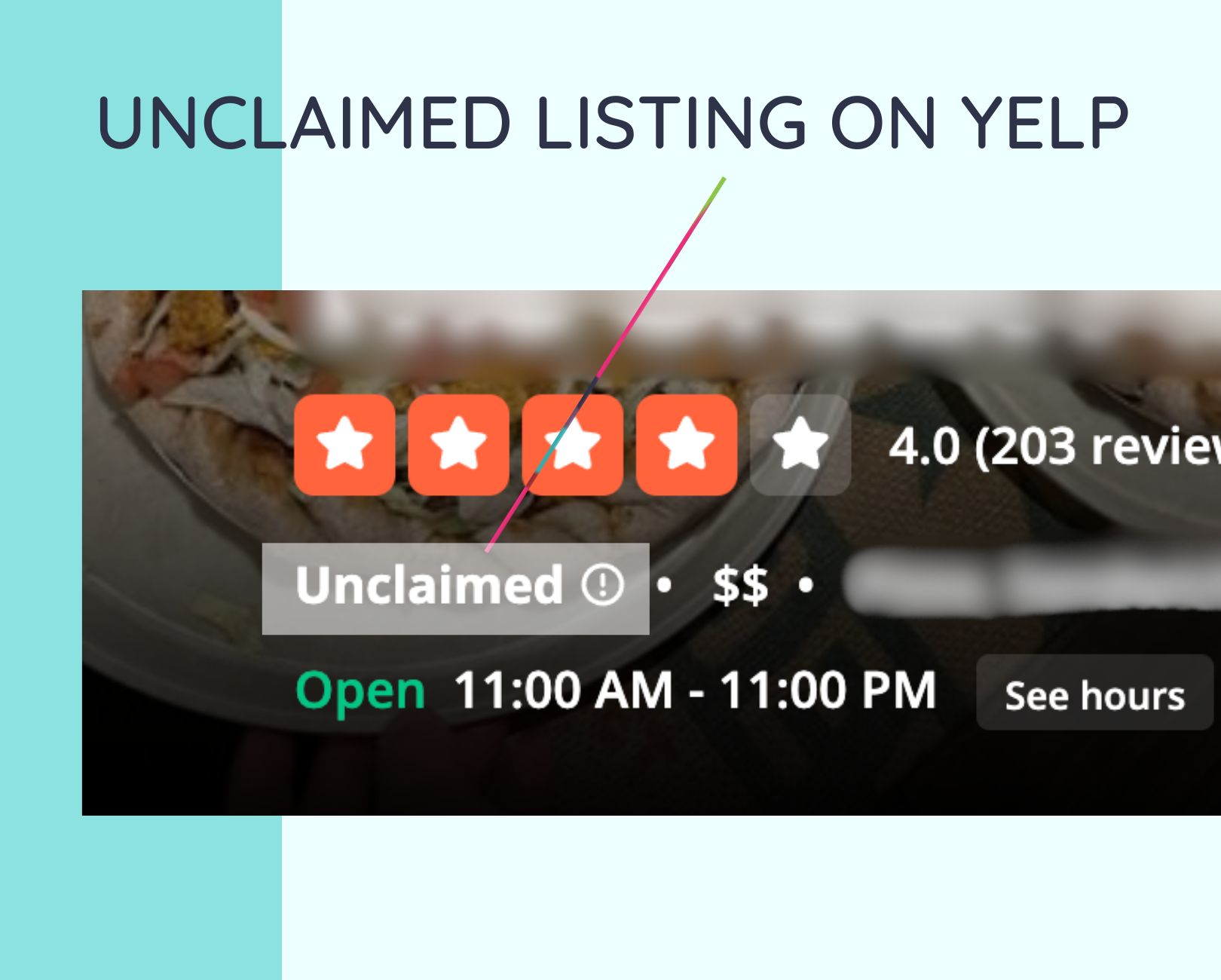
Though I could go on and on about your Google business listing, it’s also essential to list your business on popular local directories to help increase you local SEO. Depending on your industry, things like your area Chamber of Commerce, Yellow Pages, Yelp, Better Business Bureau, etc. can be helpful and build credibility with Google. If you are a trade-based business, consumers especially want to know that your job will be a good experience, so people want to see multiple credible listings on different platforms with testimonials/reviews.
Local keywords on your website
If you are genuinely targeting local traffic versus online or national scale visitors, it is so essential to use location-specific keywords in your website content, title tags, and meta descriptions. This will tell Google that your content aligns and will reinforce the partnership with your local listings AND your website to create a match made in heaven.
Local partnerships
Explore opportunities to partner with other local businesses to cross-promote and increase your visibility. The power of local branding is a key component to growing your business. Working with complementary businesses to offer joint promotions or host shared events can reach a wider audience, increase brand awareness, and strengthen your relationships within the community.
Are you a checklist type of doer? Get my free DIY SEO CHECKLIST for Your Small Business Website so you can navigate your SEO action plan, one step at a time.
There you have it, Iowa biz friend. This is one of those blogs you could come back to over and over to work on each of these things, one step at a time, for a literal 360 degree turn in your online presence. By following these DIY SEO tips, you can improve your Iowa small business's searchability and attract more customers. Take control of your online presence with these DIY strategies, and watch your business grow with every search click!
Your designer friend always,

The A-List is your 60-second inbox scroll for local brand and website tips, savvy small biz resources and the take-aways you need to get through this crazy thing called entrepreneurship.
Join the email community!
Email Community Signup
BLOG TOPICS
BROWSE RECENT POSTS
I get to use creativity everyday to help entrepreneurs focus on their passions to discovering their brand's "sweet spot" in the marketplace...and I absolutely LOVE IT!
I'd love to connect with you to chat more about your business.





